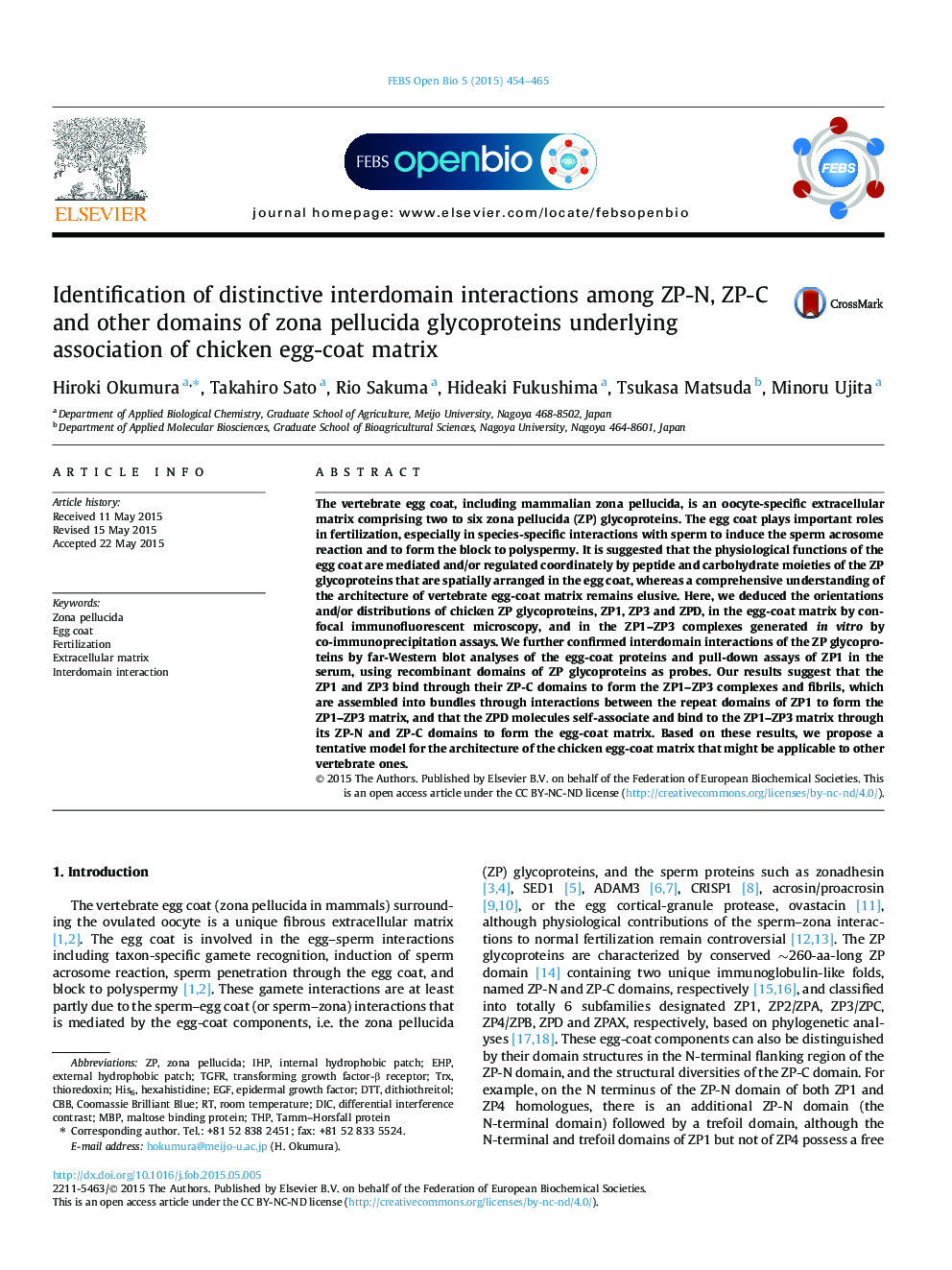| کد مقاله | کد نشریه | سال انتشار | مقاله انگلیسی | نسخه تمام متن |
|---|---|---|---|---|
| 1981606 | 1539419 | 2015 | 12 صفحه PDF | دانلود رایگان |

• Chicken ZP1 and ZP3 assemble through strong interactions between their ZP-C domains.
• ZP-C domains of chicken ZP1 and ZP3 are deeply embedded in the egg-coat matrix.
• Chicken ZP1 forms a homocomplex through non-covalent interaction between repeat domains.
• Chicken ZPD is deposited on the interstices of ZP1–ZP3 matrix in the egg coat.
• We propose a model for the architecture of chicken egg-coat matrix from these results.
The vertebrate egg coat, including mammalian zona pellucida, is an oocyte-specific extracellular matrix comprising two to six zona pellucida (ZP) glycoproteins. The egg coat plays important roles in fertilization, especially in species-specific interactions with sperm to induce the sperm acrosome reaction and to form the block to polyspermy. It is suggested that the physiological functions of the egg coat are mediated and/or regulated coordinately by peptide and carbohydrate moieties of the ZP glycoproteins that are spatially arranged in the egg coat, whereas a comprehensive understanding of the architecture of vertebrate egg-coat matrix remains elusive. Here, we deduced the orientations and/or distributions of chicken ZP glycoproteins, ZP1, ZP3 and ZPD, in the egg-coat matrix by confocal immunofluorescent microscopy, and in the ZP1–ZP3 complexes generated in vitro by co-immunoprecipitation assays. We further confirmed interdomain interactions of the ZP glycoproteins by far-Western blot analyses of the egg-coat proteins and pull-down assays of ZP1 in the serum, using recombinant domains of ZP glycoproteins as probes. Our results suggest that the ZP1 and ZP3 bind through their ZP-C domains to form the ZP1–ZP3 complexes and fibrils, which are assembled into bundles through interactions between the repeat domains of ZP1 to form the ZP1–ZP3 matrix, and that the ZPD molecules self-associate and bind to the ZP1–ZP3 matrix through its ZP-N and ZP-C domains to form the egg-coat matrix. Based on these results, we propose a tentative model for the architecture of the chicken egg-coat matrix that might be applicable to other vertebrate ones.
Figure optionsDownload as PowerPoint slide
Journal: FEBS Open Bio - Volume 5, 2015, Pages 454–465